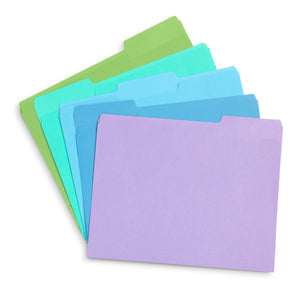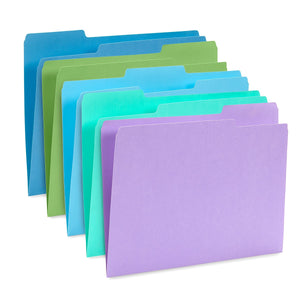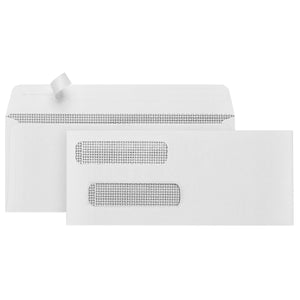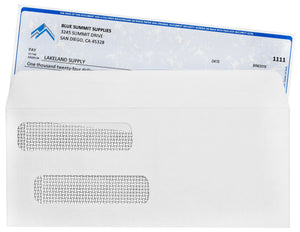While we’ve all come to rely on soap in our day-to-day lives to keep everything from our hands to our bodies to our dishes clean, how many of us know how soap really works? What are surfactants? What should you look for in a soap, and what’s the best soap out there?
In this post, we’ll break down how soap works, the best and worst kinds of hand soap, and how to choose between different types of soap and hand sanitizer.
What Are Surfactants and How Does Soap Work?
The word ‘surfactant’ is a blend of the words ‘surface-active agent.’ But what do surfactants do? Surfactants are compounds that lower the surface tension (also known as interfacial tension) between two liquids, a liquid and a solid, or a liquid and a gas. Surfactants can act as detergents, emulsifiers, foaming or wetting agents, and more.
Soap is a surfactant, as soap reduces surface tension between molecules and contains molecules that can bond to oil and water simultaneously. Soap is made up of pin-shaped molecules. Each molecule has a hydrophilic head that bonds with water and a hydrophilic tail that bonds with oil and fat and rejects water. This hybrid structure enables soap to kill several different types of bacteria and viruses—often with just a single drop diluted in water.
When soap’s pin-shaped molecules are suspended in water, they can float around as single units, interact and mingle with other molecules in the solution, and create little bubbles called micelles by assembling together. The molecules in micelles tuck their tails in and point their heads outward.
When you use soap and water to wash your hands, you surround the microorganisms on your skin with soap molecules. The hydrophilic tails of the soap molecules want to avoid water at all costs, so they force themselves into the lipid envelopes of certain viruses and microbes, pulling them apart. The essential proteins in these microbes then spill out through the cracked membranes into the water, which kills the bacteria and weakens viruses to the point of irrelevance.
Some soap molecules can also dislocate the chemical bonds that enable grime, bacteria, and viruses to stick to surfaces, lifting them off of your skin. Micelles can also form and surround pieces of bacteria and viruses or particles of dirt and trap them in floating cages. When you rinse your hands with water, the water washes away all of the microorganisms that have been trapped, damaged, or killed by the soap molecules. Yeah—science!

Best and Worst Hand Soaps: How to Decide
There are TONS of different kinds of soap out there. But how do you choose which one is right for the office?
Right off the bat, cheap hand soap is still better than the most expensive hand sanitizer. The downside to less expensive brands of hand soap isn’t that they won’t effectively clean your hands; it’s that they may contain chemicals that can irritate people with sensitive skin. And with the increased focus on handwashing because of the coronavirus pandemic, it’s important to choose a soap that won’t damage or irritate hands.
When shopping for soap, look for soaps that are dye-free and fragrance-free, as these soaps are the least likely to irritate skin or cause allergic reactions.
Hand sanitizers are not as effective as washing your hands with soap and water. Sanitizers that contain at least 60% alcohol work similarly to soap by rupturing the lipid membranes of bacteria and viruses, but they are ineffective at removing microorganisms from your skin. Plus, hand sanitizers do not eliminate all types of germs. There are viruses and bacteria that don’t rely on liquid membranes to infect cells, such as bacteria that can cause pneumonia and diarrhea and viruses that can cause the common cold.
However, these tough microbes can still be expelled from the skin by scrubbing your hands thoroughly for 20 seconds or more, which is another reason why washing your hands with soap and water is much more effective than using hand sanitizer. Plus, there’s also the fact that many people don’t use hand sanitizer properly, either because they don’t use a large enough amount or because they wipe their hands before the sanitizer has dried.
Regardless of the type of soap you choose, keep in mind that soap is always more effective than hand sanitizer.
Different Types of Hand Soap

Antibacterial Soap
If you’re looking for the best antibacterial hand soap or antibacterial hand soap for sensitive skin, let us stop you right there. According to the American Medical Association, “There is no evidence that antibacterial soaps are more effective than plain soap for preventing infection under most circumstances in the home or in public places.” The FDA also says, “To date, the benefits of using antibacterial hand soap haven’t been proven.”
In fact, not only have the benefits not been proven, but the prolonged usage of antibacterial soaps could have negative consequences for your health.
Antibacterial soaps are made with certain chemicals and ingredients that are not found in plain soaps; they’re added to products to prevent or at least reduce bacterial infections. One of the most popular chemicals is called triclosan. The FDA does not yet know how triclosan affects humans, but some studies show that triclosan contributes to making bacteria more resistant to antibiotics. This resistance may significantly impact the effectiveness of medical treatments, including antibiotics.
🧼 if you are choosing an antibacterial soap, look for products that are paraben-free.

Liquid Soap
Liquid hand soap is definitely the best soap to have around a workplace. It’s easy to use, and it won’t spread germs like a bar of soap will.
The best liquid hand soap contains moisturizer, as washing your hands frequently can dry out your hands and leave you with cracked and damaged skin. Many different brands of liquid soap now contain moisturizer, so be sure to check the ingredients before making your purchase. Keep your and your team’s hands clean, smooth, and protected with plain liquid soap.
🧼 Blue Summit Supplies sells a wide variety of soaps, including liquid soap with moisturizer.

Foam Soap
Foam soap comes out of the pump like a lather. While foam soap definitely feels nice on your skin, foam soap is not as effective as liquid soap at killing bacteria. This is thought to be the case because the lather is supposed to be generated by vigorously scrubbing your hands together. The amount of soap in one pump of foam soap is also much less than in a pump of liquid soap.

Bar Soap
Bar soap is not recommended for use in the office, as germs can actually grow on the surface of a bar of soap and spread from employee to employee. While adequate for use in the home, bar soap should be avoided when buying soap for the office.
🧼 We love soap! Blue Summit Supplies carries a wide variety of soap and soap dispensers for bathrooms, kitchens, and other washing stations.
Different Types of Hand Sanitizer

Alcoholic Hand Sanitizer
While not as effective as soap, hand sanitizers still offer important protection from germs and bacteria. However, hand sanitizer must contain over 60% alcohol, either ethyl alcohol or isopropyl alcohol, in order to disinfect your hands. This is because of alcohol’s antiseptic qualities, which can effectively kill germs and bacteria found on hands.
Alcoholic hand sanitizers do come with some downsides. Because of their high alcohol content, hand sanitizers are flammable, so they shouldn’t be used in schools, prisons, or mental health facilities. This is part of the reason why it’s so important to let hand sanitizer dry before continuing with any activities involving heat, static electricity, or open flames.
There is also the risk of alcohol poisoning in kids. According to the American Association of Poison Control Centers (AAPCC), as of March 31, 2022, poison control centers have managed 1,550 exposure cases about hand sanitizer in children 12 years and younger.
This is why, if used in a school setting, hand sanitizer must be kept out of the reach of children and only used with adult supervision. However, in an office setting, you can probably rest assured that your employees won’t lick their hands after applying sanitizer. And as long as you keep the workspace filled with fun and healthy office snacks, your employees won’t go looking for something as unappetizing as hand sanitizer.
When buying hand sanitizer, look for products with 60-95% alcohol content.
🧼 Blue Summit Supplies carries a wide variety of hand sanitizers for use at home, on the go, or at the office.

Non-Alcoholic Hand Sanitizer
Non-alcoholic hand sanitizers usually contain benzalkonium chloride combined with water and other ingredients. Together, these ingredients disinfect hands while also keeping them moisturized, which is why these kinds of hand sanitizers may be preferred by people with sensitive skin.
While the FDA considers non-alcoholic hand sanitizers to be the worst hand sanitizers, Brigham Young University researchers found that alcohol-free hand sanitizers work just as well at disinfecting against COVID-19 as alcohol-based products.
Non-alcohol-based hand sanitizers are typically non-toxic, which makes them a reasonable alternative for children.
While alcoholic or non-alcoholic hand sanitizers may work in a pinch, thoroughly washing your hands with soap and warm water for at least 20 seconds is the most effective way to clean your hands and prevent the spread of germs and bacteria.
Keeping Clean With Blue Summit Supplies
💡Workplace DIY Hand Washing Station (With Printable Restroom Signs)
💡 How to Keep a Clean Office Kitchen
💡 Office Spring Cleaning Ideas (Plus Yearly, Monthly, and Weekly Cleaning Checklists)
Follow our office supplies blog for the latest workplace news, trends, product comparisons, and more. If you have questions or want to talk to someone about office supplies, send us an email or connect with us on Twitter, Facebook, or Instagram.










